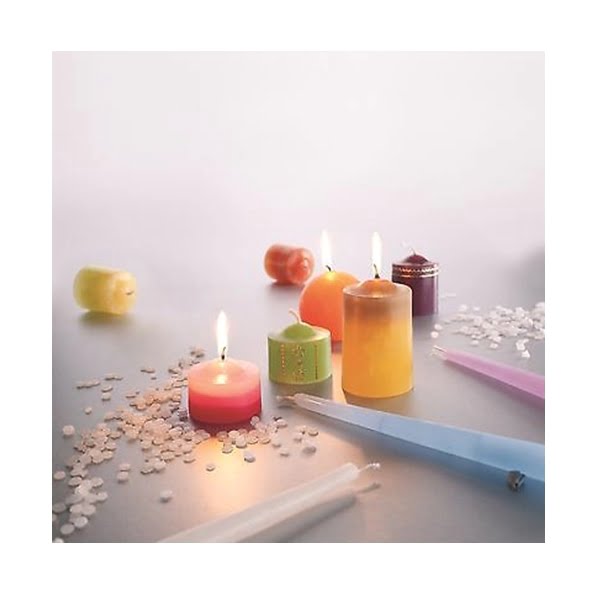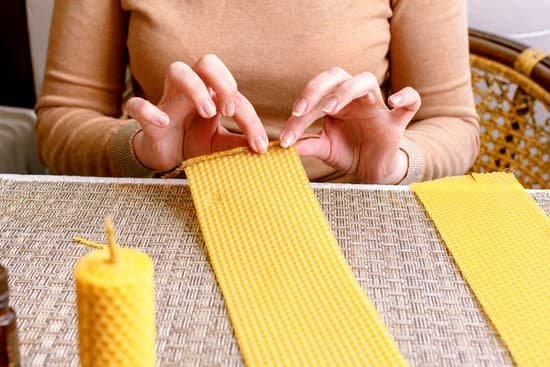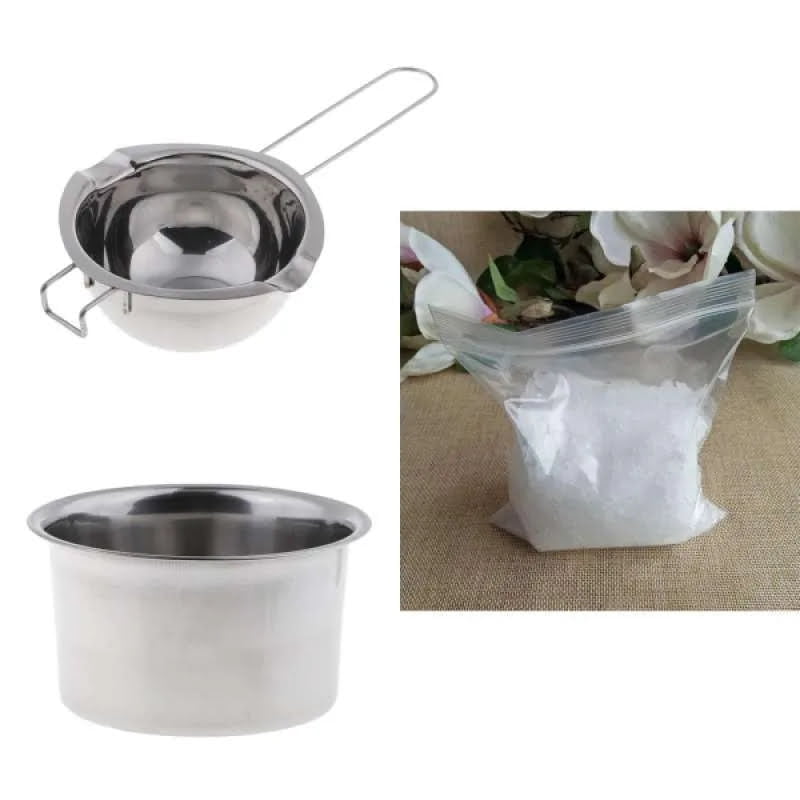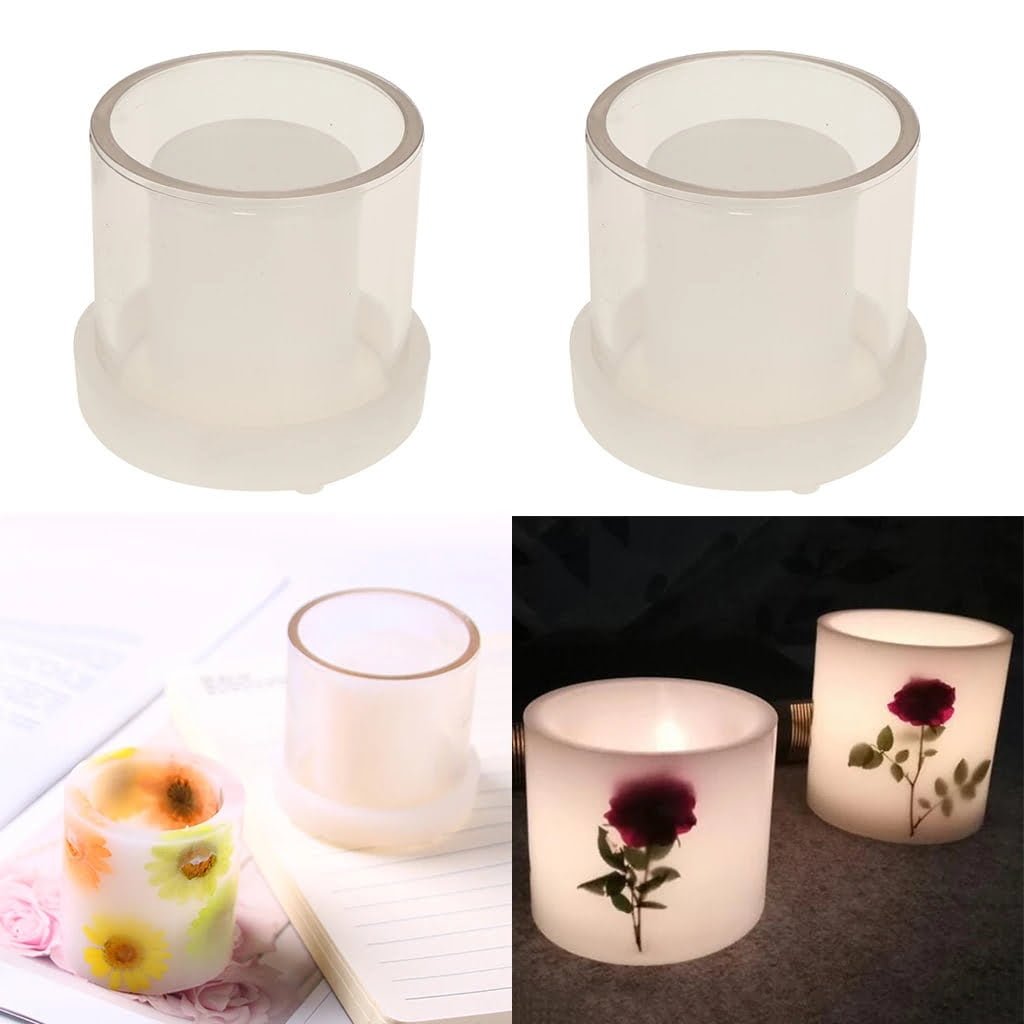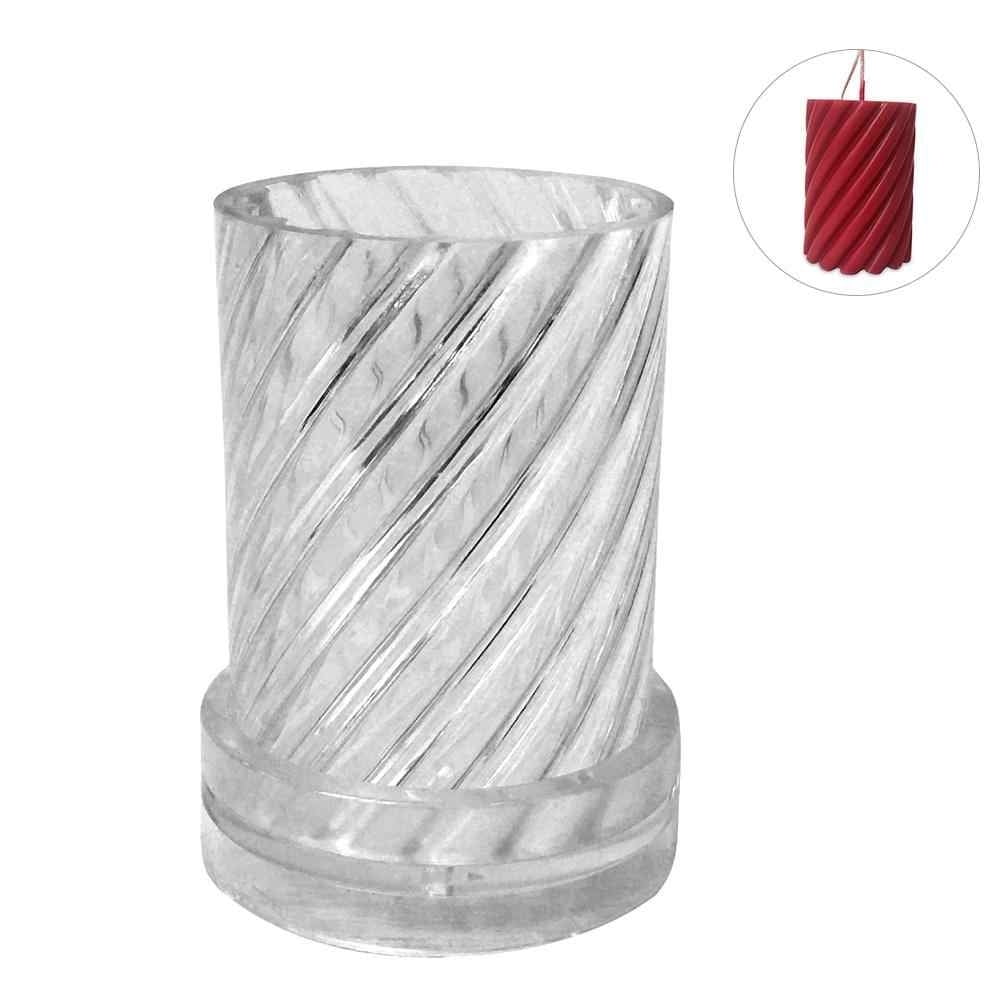Dry flowers add a touch of natural beauty and elegance to homemade candles. With their unique aesthetic appeal, they have become increasingly popular in the world of candle making.
The endless possibilities in terms of colors and textures make dry flowers the perfect addition to create visually stunning candles. In this article, we will explore the growing trend of using dry flowers in candle making, as well as provide a comprehensive guide on selecting, drying, and preparing flowers for candle making.
When it comes to incorporating dry flowers into candles, the possibilities are truly endless. Not only do they add a delicate and timeless beauty to the final product, but they also offer a range of colors that can enhance any candle design. Whether you prefer vibrant petals or subtle pastels, there is a wide variety of dried flowers available to suit your personal style and creative vision.
Moreover, the use of dry flowers in candle making is not limited to just their visual appeal. Many dried flowers retain their natural fragrance even after being dried, further enhancing the overall ambiance created by the candles. This combination of beauty and scent makes them an ideal choice for those seeking a unique sensory experience when lighting their candles.
As this trend continues to grow, it is important to understand which flowers are best suited for drying and how to properly preserve them for candle making. In the following sections, we will delve into these topics and provide practical tips on selecting the right types of flowers for drying, exploring various preservation methods, and comparing different drying techniques.
Join us as we embark on this journey through the world of dry flower candle making – from choosing the best blooms to designing unique arrangements and enhancing them with captivating scents. Unleash your creativity and discover how these exquisite blooms can transform your homemade candles into works of art that bring both visual delight and soul-soothing fragrance into your space.
The Best Flowers for Drying
Understanding which flowers are suitable for drying is essential when it comes to incorporating dry flowers in candle making. Not all flowers retain their beauty and fragrance when dried, so it’s important to select the right types of flowers for this purpose. Some flowers that are commonly used for drying include roses, lavender, hydrangeas, and baby’s breath.
Roses are a classic choice for dried flower arrangements as they maintain their shape and color exceptionally well. Lavender is known for its calming scent and can add a lovely aroma to your candles. Hydrangeas may require a bit more care during the drying process, but they can provide stunning colors and textures in candle designs. Baby’s breath is another popular choice as it dries easily and looks delicate in candle arrangements.
When selecting flowers for drying, it’s best to choose those that are fully open but not yet wilted. Avoid using flowers that have broken petals or damaged foliage, as they may not dry well or lose their beauty quickly. It’s also important to consider the overall size of the flower and how it will fit into your candle design.
Different preservation methods can be used to dry flowers, including air drying, pressing, microwave drying, and silica gel. Air drying involves hanging the flowers upside down in a dark and well-ventilated area until they are fully dried. Pressing is another popular method where flowers are placed between absorbent materials like paper or fabric under heavy weights for an extended period.
While air drying is one of the simplest methods, pressing allows you to preserve the original shape of the flower better. Microwave drying is a quicker option that involves placing the flowers in between layers of microwave-safe material and heating them in short intervals until dried. Silica gel can also be used to speed up the drying process by absorbing moisture from the flowers efficiently.
To prevent common mistakes when drying flowers, make sure to handle them with care and avoid touching the delicate petals as much as possible. It is also important to keep an eye on the drying process, checking for any signs of mold or discoloration. By following these techniques and recommendations, you can ensure that your dried flowers will be in their best condition when incorporated into your candle making projects.
| Flower | Suitable for Drying? |
|---|---|
| Roses | Yes |
| Lavender | Yes |
| Hydrangeas | Yes |
| Baby’s Breath | Yes |
Drying Techniques
Drying Techniques for Dry Flower Candle Making
When it comes to incorporating dried flowers into candle making, proper drying techniques are crucial. This section will provide a step-by-step guide on how to dry flowers for candle making, as well as compare different drying techniques including pressing, air drying, microwave drying, and silica gel.
Step-by-Step Guide: Pressing Flowers
Pressing flowers is a traditional method of drying that helps retain the original color and shape of the blooms. To press flowers for candle making:
- Start by selecting fresh flowers with vibrant colors. Ideally, choose flowers that have just bloomed or are in mid-bloom.
- Gently remove any excess moisture from the petals using a soft cloth or paper towel.
- Arrange the flowers neatly between two sheets of wax paper or parchment paper.
- Place the flower-filled sheets inside a heavy book or floral press.
- Stack additional books or add weight on top to ensure even pressure.
- Let the flowers dry for 1-2 weeks, depending on their thickness.
- Once fully dried, carefully remove the pressed flowers from the paper.
Different Drying Techniques: Air Drying, Microwave Drying, and Silica Gel
Aside from pressing, there are other effective drying techniques for preserving the beauty and fragrance of dry flowers.
Air drying is one of the simplest and most cost-effective methods of flower preservation for candle making. Hang small bundles of tied flowers upside down in a well-ventilated area away from direct sunlight until they are completely dry.
Microwave drying offers a quick alternative to air-drying but requires caution to avoid overheating and damaging the flowers. Place single layers of blooms between two microwave-safe plates lined with absorbent paper towels. Microwave in short bursts at low power until the petals feel crisp.
Using silica gel is another popular method that allows for faster drying while retaining the flowers’ color and form. Fill a microwave-safe container with a layer of silica gel, place individual flowers inside, and cover them completely with additional gel. Microwave in short intervals until the flowers are fully dry.
Tips for Preserving the Original Color and Shape
Preserving the original color and shape of dried flowers is essential for achieving desirable results in candle making. Here are some tips to help you achieve this:
– Harvest fresh flowers at their peak bloom, as blooms that are past their prime may not retain their vibrant colors or shape after drying.
– Handle the flowers with care to prevent damage or breakage during the drying process.
– Keep the drying environment cool and dry to ensure optimal preservation.
– Avoid exposing the flowers to direct sunlight, as it may cause color fading.
– Consider using flower-preservation sprays or sealants to further protect the appearance of dried flowers.
Avoiding Common Mistakes when Drying Flowers
While drying flowers for candle making can be a rewarding experience, there are some common mistakes that should be avoided:
- Rushing the process: Give the flowers enough time to dry completely; impatiently handling or prematurely using partially dried blooms can lead to wilted candles or mold growth.
- Overexposure to sunlight: Direct sunlight can bleach out colors and cause petals to become brittle or crumble.
- Using unsuitable flower varieties: Not all flowers are well-suited for drying; certain delicate blooms might not retain their shape or fragrance when dried.
- Neglecting humidity control: High humidity levels can impede the drying process and potentially result in mold growth on your dried flowers.
By following proper techniques and avoiding common mistakes, you can successfully dry your favorite flowers for stunning dry flower candles. In the next section, we will explore how to prepare these dried blooms before incorporating them into candles.
Preparing Dried Flowers for Candle Making
When it comes to incorporating dried flowers into candle making, there are a few important steps to take in order to ensure the best results. Preparing the dried flowers before adding them to your candles is crucial for both their appearance and fragrance. Here are some dos and don’ts for preparing dried flowers for candle making:
Dos:
- Cleaning and treating dried flowers: Before using dried flowers in your candles, it is important to clean them properly. Remove any dirt or debris by gently brushing or blowing on the petals. Additionally, you can use a small amount of water or rubbing alcohol on a soft cloth to gently wipe away any remaining impurities. For delicate dried flowers, consider using compressed air or a hair dryer set on low heat for cleaning.
- Removing excess moisture: Moisture can cause issues when incorporating dried flowers into candles, so it is essential to ensure that the flowers are fully dry before using them. Place the flowers in an airtight container with silica gel packets or rice for several days, allowing them to absorb any leftover moisture. Alternatively, you can hang the flowers upside down in a well-ventilated area until they become crisp and brittle.
- Enhancing fragrance: Dried flowers may lose some of their natural aroma during the drying process. To enhance their fragrance, lightly mist the petals with floral water or sprinkle them with a small amount of essential oil that complements their scent. Allow the flowers to dry completely before adding them to your candles.
Don’ts:
- Exposing delicate dried flowers to excessive heat: Delicate dried flowers such as roses or lavender can lose their vibrant colors when exposed to high temperatures. Avoid using drying methods like microwaving or oven drying that generate too much heat. Instead, opt for gentle techniques like pressing or air drying.
- Handling dried flowers roughly: Dry flowers are fragile and can easily be damaged. Avoid handling them roughly or using excessive force when cleaning or treating them. Be gentle and take your time to preserve the original shape and color of the flowers.
- Oversaturating dried flowers with fragrance: While adding fragrance to dried flowers can enhance their aroma, it is essential not to oversaturate them with excessive amounts of essential oils or floral water. Too much fragrance can overpower the natural beauty of the dried flowers and make the candle overwhelming.
By following these dos and don’ts for preparing dried flowers, you will be able to ensure that your candles showcase the beauty of these botanical elements while also maintaining their quality and longevity. Remember to handle delicate dried flowers with care, remove excess moisture, and lightly enhance their fragrance for a truly captivating candle-making experience.
| Dos | Don’ts |
|---|---|
| Clean dried flowers properly before use | Avoid exposing delicate dried flowers to excessive heat |
| Remove excess moisture before incorporating into candles | Avoid handling dried flowers roughly |
| Enhance fragrance lightly after drying | Avoid oversaturating dried flowers with fragrance |
Creative Ideas
When it comes to candle making, incorporating dry flowers opens up a world of creative possibilities. The addition of dried flowers can transform a simple homemade candle into a stunning work of art. Whether you’re a beginner or an experienced candle maker, experimenting with different techniques for incorporating dry flowers can result in unique and visually appealing candle arrangements.
One creative idea for designing unique candle arrangements is to use dried flowers to create beautiful patterns and designs on the surface of the candle. This can be achieved by carefully placing individual dried flower petals or small clusters of flowers onto the surface of the melted wax before it solidifies. By arranging the flowers in different patterns or layering them on top of each other, you can create intricate designs that add depth and texture to the finished candle.
Another technique for incorporating dry flowers is to combine different textures and colors to create visually appealing candles. Consider using a variety of dried flower types, such as lavender, rose petals, or baby’s breath, to add dimension and interest to your candles. You can also experiment with different color combinations by using flowers that have been dyed or preserved in vibrant hues.
Arranging dry flowers in candle holders is another way to enhance the overall aesthetics of your candles. Depending on your preference, you can either embed the dried flowers directly into the base of the holder or arrange them around the perimeter for a more delicate look. Pairing complementary flower colors with the holder’s material – be it glass, ceramic, or metal – creates a cohesive and visually pleasing arrangement.
To ensure successful design outcomes when working with dry flower candles, remember that balance is key. Avoid overcrowding your candles with too many dry flowers as it may obstruct the light from coming through when burned. Striking a balance between artistic arrangement and functionality will ensure that your candles are not only visually pleasing but also burn evenly.
Fragrant Flames
Candles are not only a visual delight but can also create a captivating fragrance that fills the room. When it comes to dry flower candles, selecting the right scents is crucial to enhance the overall ambiance and create a harmonious combination with the dried flowers. In this section, we will explore different strategies for choosing the perfect scents for your dry flower candles and provide recommendations for creating unique fragrance profiles.
Matching the fragrance of candles with the dried flowers used can create a cohesive sensory experience. For example, if you have lavender dried flowers in your candle, pairing it with a lavender-scented essential oil can intensify the soothing and relaxing atmosphere. On the other hand, if you have vibrant and tropical dried flowers like hibiscus or orchids, opting for fruity or floral scents such as citrus or jasmine can complement these visually striking blooms.
Experimenting with essential oils allows for personalization and creative exploration. Essential oils offer an extensive range of scents that can be blended together to create custom fragrances. Consider combining different oils, such as rosemary, lemongrass, and eucalyptus, to add depth and complexity to your dry flower candles. Additionally, researching the properties and benefits of essential oils can help you choose scents that align with your desired mood or intention.
When selecting scents for your dry flower candles, it is important to consider their intensity level. Some essential oils have strong aromas that may overpower the delicate subtleties of dried flowers. In this case, diluting these potent scents with carrier oils like jojoba or almond oil can help maintain balance and prevent any overpowering smells.
Long-lasting Beauty
Dry flower candles are not only beautiful to look at, but they also create a calming and enchanting ambiance with their natural fragrance. To ensure that your dry flower candles continue to bring joy and beauty for an extended period of time, it is important to follow some key practices for preserving their lifespan.
Caring for and Extending the Longevity of Dry Flower Candles
To care for your dry flower candles and extend their longevity, there are a few important steps to keep in mind. Firstly, be mindful of where you place your candles. It is best to keep them away from direct sunlight or any heat source as this can cause the flowers to wilt or discolor.
Secondly, when lighting your candle, trim the wick to about ¼ inch before each use. This will help prevent excessive smoke and soot from forming which can affect the appearance of the dried flowers.
Lastly, it’s essential to burn your dry flower candles properly. When first lighting the candle, allow it to burn until the entire surface has melted into a pool of wax. This prevents tunneling and ensures an even burn throughout the lifespan of the candle. Avoid burning a dry flower candle for more than four hours at a time to avoid overheating and potentially damaging the dried flowers.
Tips for Preventing Wilting or Discoloration
To prevent wilting or discoloration of the dried flowers in your candles, it’s crucial to handle them with care. Avoid touching the petals too much as oils from your hands can cause them to degrade faster. If you ever notice any signs of wilting or discoloration on your dried flowers, gently remove them from the candle surface and replace them with fresh ones if desired.
Another tip is to choose flowers that naturally retain their shape and color when dried. By selecting flowers such as lavender, roses, baby’s breath, or chamomile, you can ensure that your dry flower candles maintain their beauty for a longer period of time.
Best Practices for Storing and Displaying Dry Flower Candles
When storing your dry flower candles, it’s important to keep them in a cool and dry place. High humidity can cause the flowers to wilt or develop mold. Consider wrapping your candles individually in tissue paper or placing them in an airtight container to protect them from dust and potential damage.
When displaying your dry flower candles, choose a location away from drafts to prevent the flame from flickering and potentially igniting the dried flowers. A stable surface is also important to prevent accidental tipping or falling of the candles.
By following these practices, you can ensure that your dry flower candles continue to bring beauty and serenity into your space for an extended period of time. With proper care and maintenance, you can enjoy the long-lasting beauty of these enchanting creations.
Inspiration from Experts
In conclusion, incorporating dry flowers into candle making adds a touch of beauty and uniqueness to homemade candles. Throughout this article, we have explored the various aspects of using dry flowers in candle making, from selecting the right flowers for drying to preserving their fragrance and color. We have also discussed different techniques for drying flowers, preparing them for candle making, and designing beautiful arrangements with dry flowers.
One of the most exciting aspects of working with dry flowers in candle making is the endless creative possibilities. By using different colors, textures, and patterns, you can design candles that are visually stunning and truly one-of-a-kind. The expert advice and inspiration shared by renowned candle makers in this article further demonstrate how dry flowers can be transformed into exquisite works of art.
To ensure that your dry flower candles maintain their longevity and aesthetic appeal, it is important to properly care for them. By following the tips provided on preventing wilting or discoloration over time, storing them correctly, and engaging in regular maintenance, you can enjoy the beauty of your dry flower candles for years to come.
In conclusion, incorporating dry flowers into candle making allows you to create unique and visually striking candles that bring both beauty and fragrance to any space. Experiment with different combinations of dried flowers and scents to find the perfect match for your personal style and create a captivating ambiance in your home.
With the guidance and inspiration provided by experts in this article, along with your own creativity, you can embark on a rewarding journey of creating exquisite dry flower candles that will impress both yourself and others.

Welcome to my candle making blog! In this blog, I will be sharing my tips and tricks for making candles. I will also be sharing some of my favorite recipes.

